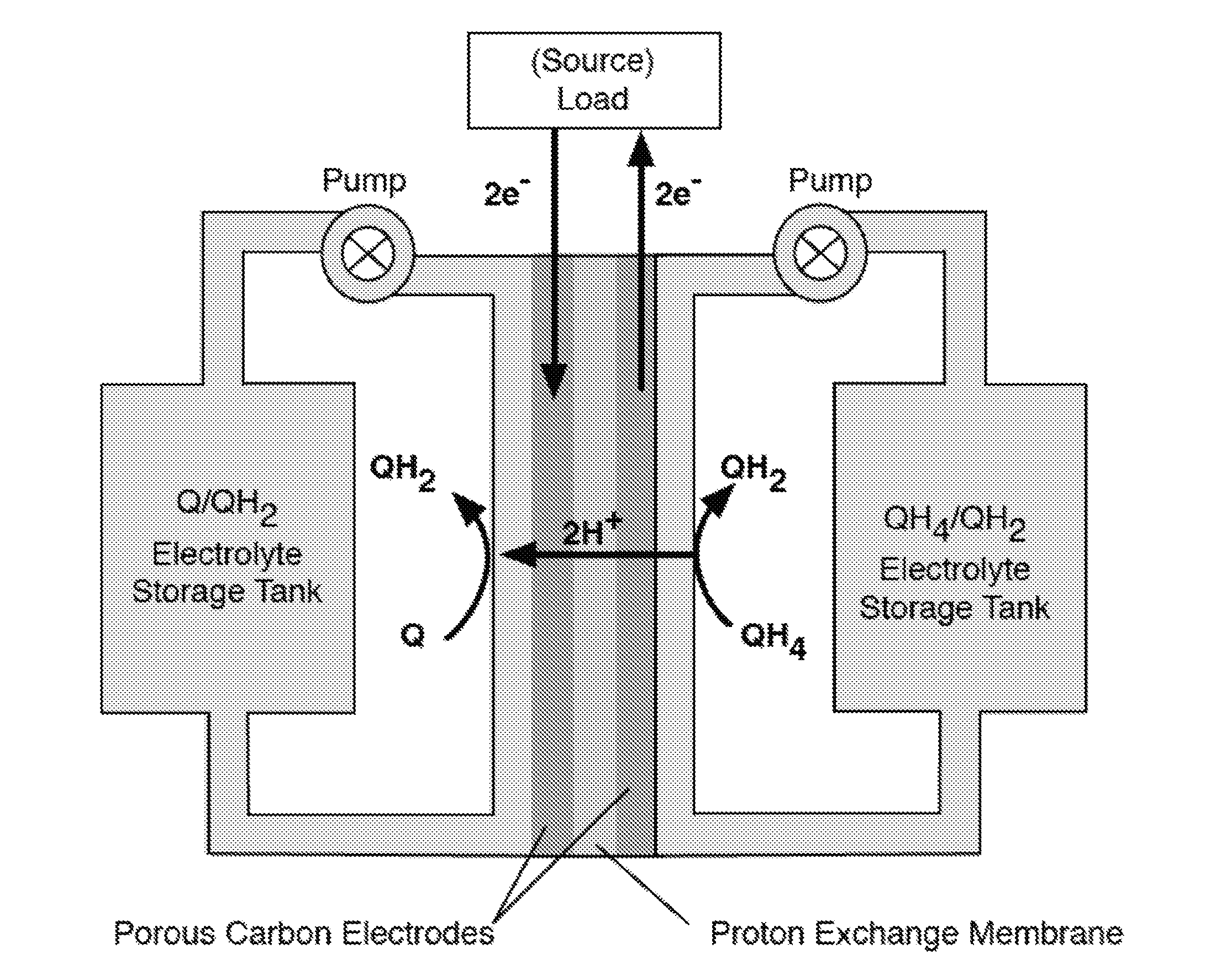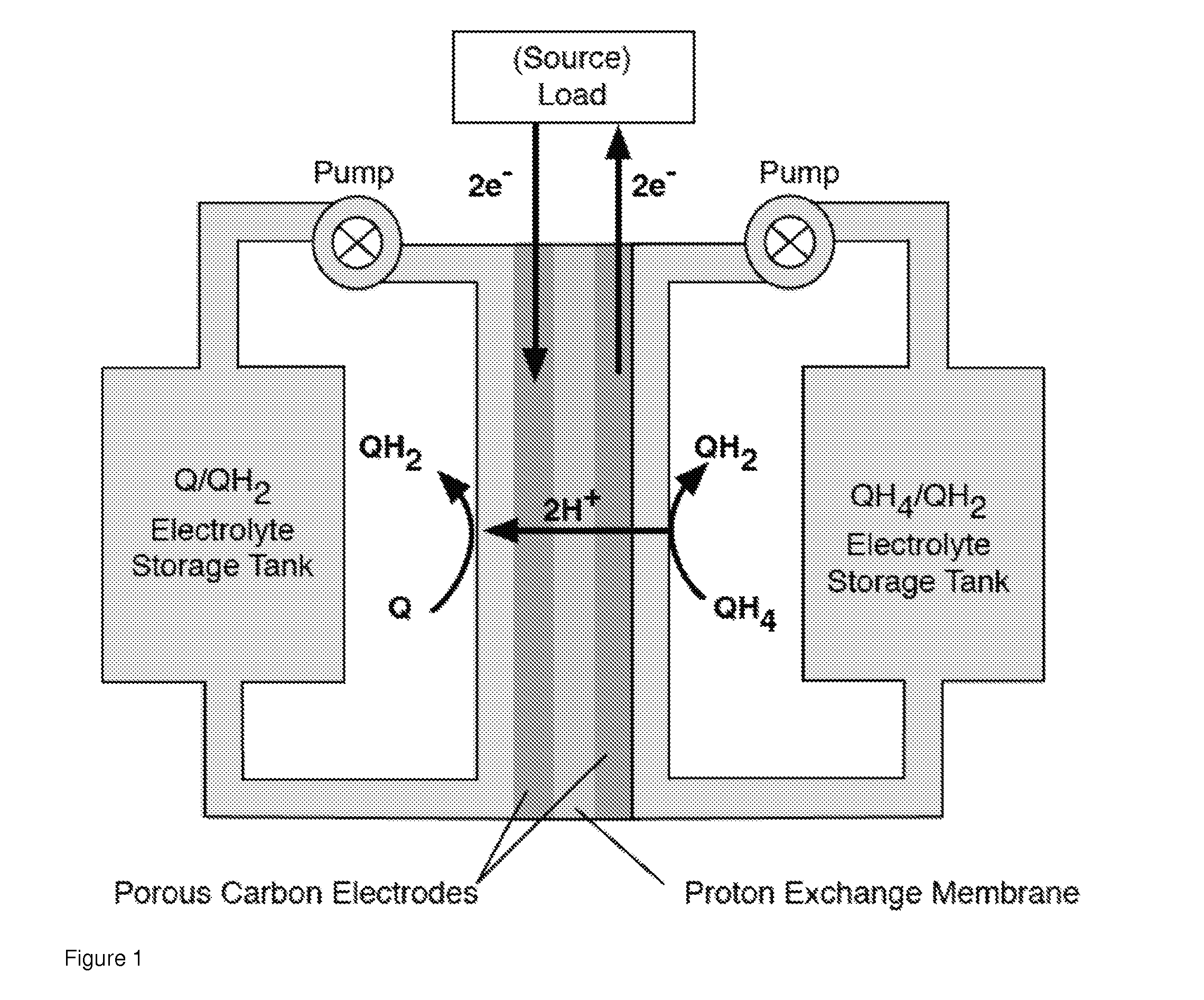Quinone and hydroquinone based flow battery
a flow battery and hydroquinone technology, applied in the field of quinone and hydroquinone based flow batteries, can solve the problems of reducing the /power ratio (i.e. the peak-power discharge time), unable to replace a significant fraction of our current fossil fuel-based electrical generation, and unable to achieve the effect of large-scale energy storage, high current density, and high efficiency
- Summary
- Abstract
- Description
- Claims
- Application Information
AI Technical Summary
Benefits of technology
Problems solved by technology
Method used
Image
Examples
example 1
Theoretical Study of Modified AQDS Structures
[0073]Chemical structure modifications to the anthraquinone backbone can be made to further lower E0, thereby raising the cell voltage. One way to do this is by attaching to the aromatic ring electron-donating groups such as hydroxy (—OH), which make the quinone less electrophilic (Y. Song and G. R. Buettner, Free Radical Biology and Medicine 49, 919 (2010)). Hydroxy-substituted anthraquinones are natural products that have been extracted for millennia from common sources such as rhubarb. This could even provide a renewable source for future anthraquinone-based electrolyte solutions.
[0074]Quantum chemical calculations of un-substituted and hydroxy-substituted AQDS were performed to predict how substitution patterns would change both E0 of the quinone / hydroquinone couples and G0solv in aqueous solution. The hydroxy group was systematically substituted for hydrogen on AQDS (Scheme 1).
SCHEME 1AQDS screened by theoretical calculations.—OHIDsu...
example 2
[0079]A solution of 1,4-dihydroxy-9,10-anthraquinone-3-sulfonic acid
(concentration about 1 mM in 1M sulfuric acid in water) was studied by cyclic voltammetry (CV). The CV curve for this compound in FIG. 6 shows 2 sets of nearly reversible redox peaks located near 0.11 V and 1.08 V.
example 3
[0080]A solution of 1,2-dihydroxy-9,10-anthraquinone-3-sulfonic acid
(concentration about 1 mM in 1M sulfuric acid in water) was studied by CV. The CV curve for this compound in FIG. 7 shows 2 sets of redox peaks located near 0.10 V and 1.3 V.
PUM
| Property | Measurement | Unit |
|---|---|---|
| current densities | aaaaa | aaaaa |
| pH | aaaaa | aaaaa |
| voltages | aaaaa | aaaaa |
Abstract
Description
Claims
Application Information
 Login to View More
Login to View More - R&D
- Intellectual Property
- Life Sciences
- Materials
- Tech Scout
- Unparalleled Data Quality
- Higher Quality Content
- 60% Fewer Hallucinations
Browse by: Latest US Patents, China's latest patents, Technical Efficacy Thesaurus, Application Domain, Technology Topic, Popular Technical Reports.
© 2025 PatSnap. All rights reserved.Legal|Privacy policy|Modern Slavery Act Transparency Statement|Sitemap|About US| Contact US: help@patsnap.com



